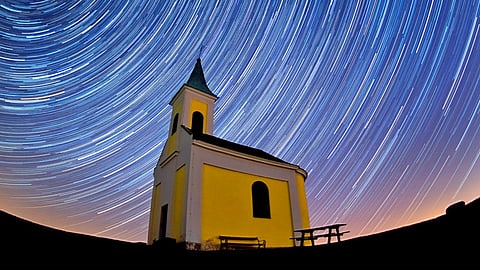

The Lyrid meteor shower, one of the earliest recorded astronomical phenomena in human history, is currently active and will peak overnight Monday, April 21, to Tuesday, April 22, 2025.
This year's peak is expected to yield up to 18 meteors per hour, including the occasional magnificent "fireball", which is a particularly brilliant meteor with a longer, more luminous path, The Times of India reports.
These quick flashes of light are easiest to see in the early morning, especially a few minutes before sunrise, when the skies are the darkest and the atmosphere is at its peak.
What is the Lyrid Meteor Shower?
The Lyrids are among the oldest reported meteor showers, stretching back over 2,700 years. They are created by fragments of Comet Thatcher (C/1861 G1), which takes 415 years to orbit the sun.
As Earth passes through the comet's particle path, the chunks burn up in our atmosphere, resulting in the distinctive shooting-star appearance.
The Lyrids are hardly the most lavish meteor shower of the year, but they do provide some beautiful vistas. At their peak, expect 10 to 20 meteors every hour.
They occasionally surprise us with outbursts of up to 100 meteors per hour, known as a "outburst" — though this is not a guarantee.
What distinguishes the Lyrid meteor shower is its historical significance and unexpected appeal. Although annual showers are typically moderate in most years, the Lyrids are noted for unexpected outbursts.
How and when to see them
Although the Lyrids are most visible in the Northern Hemisphere, southern latitude observers can still see the phenomenon, especially in the late evening and early morning.
The quality of vision will always be determined by local weather, moonlight, and light pollution. Viewers looking for the best viewing conditions should seek dark-sky areas with open horizons and minimal artificial light interference.
Even though the Lyrids are active from April 17 to April 26, their peak occurs at 13.00 UTC (Universal Time Coordinated) on April 22, or 8.00 am Eastern Daylight Time.
According to Space.com, the best display during the early morning hours of April 22 is at the peak of the meteor shower, ideally between 3:00 am and 5:00 am, just before dawn.
As with other astronomical sightings, the best experience is in a dark place away from city lights with an open, panoramic view of the sky.
